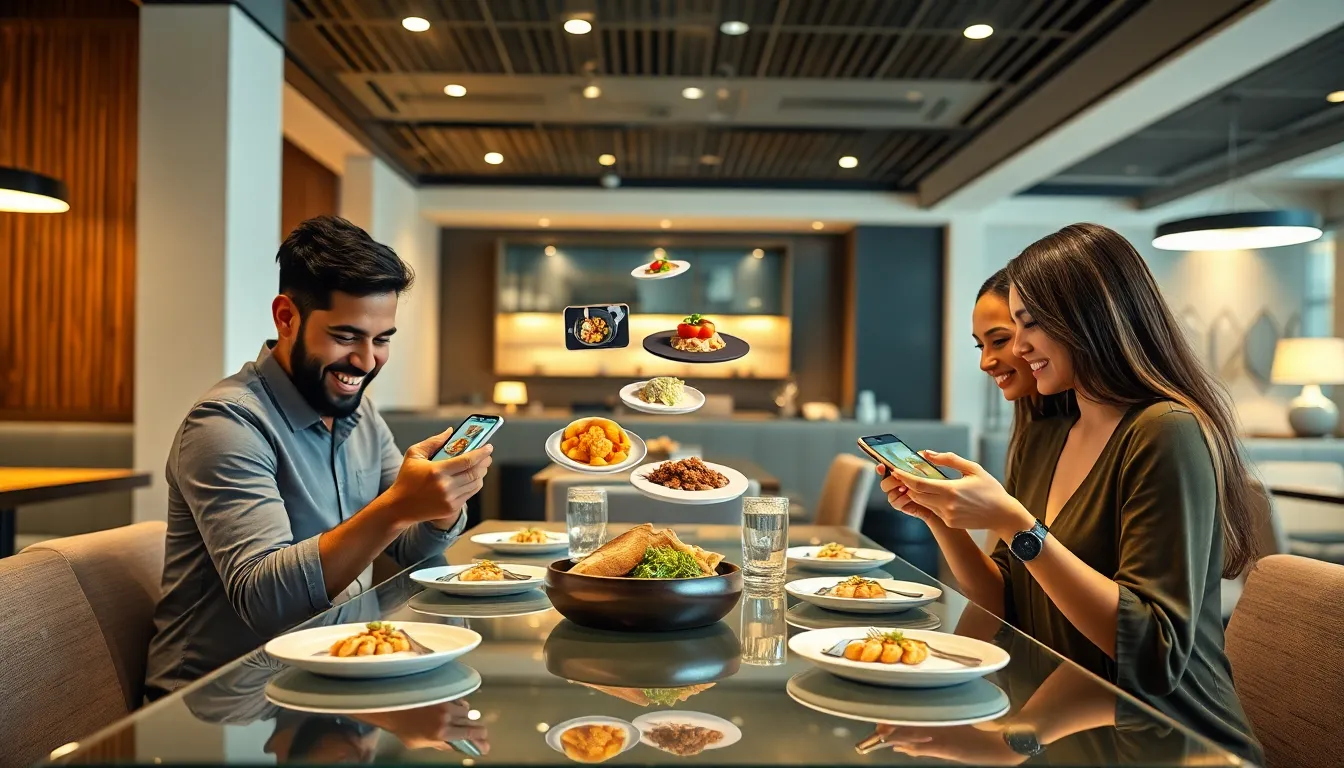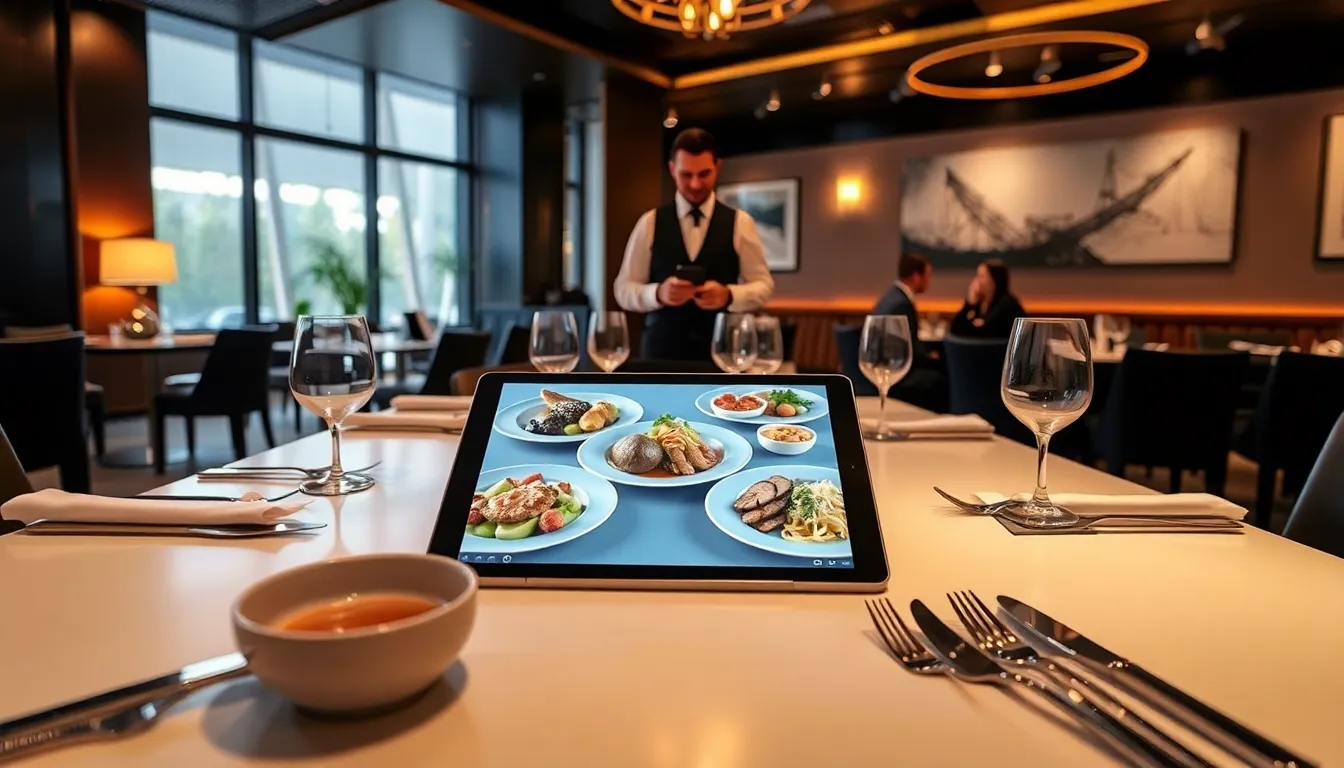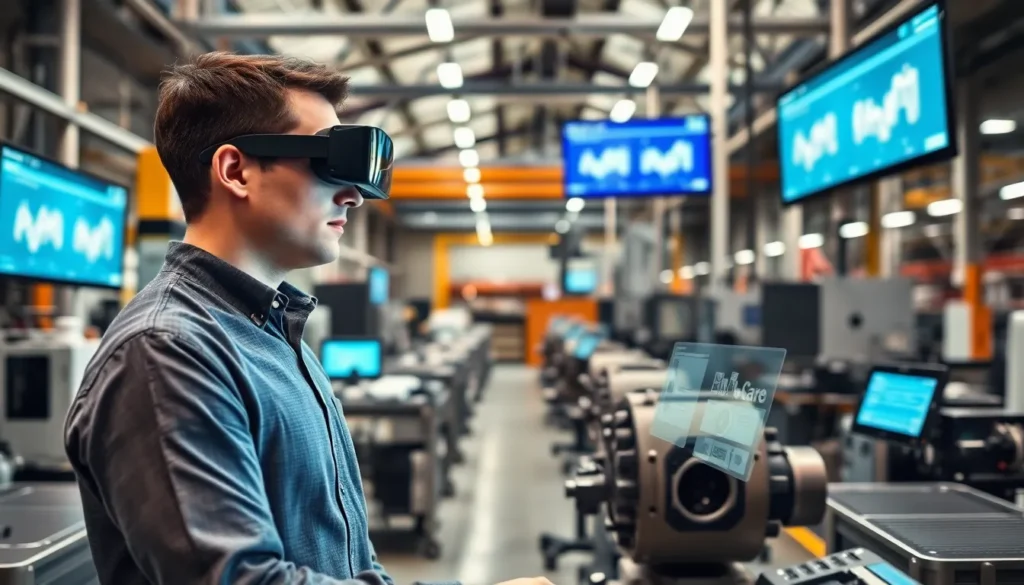Imagine sitting down at a restaurant only to find your menu come to life in 3D, right in front of your eyes. Sounds like something out of a sci-fi movie, right? Welcome to the world of augmented reality (AR) restaurant menus. This innovation isn’t just a gimmick but a game-changer for how diners experience food. In this text, we’ll explore how AR elevates your dining journey, complete with visual treats, interactive features, and a sprinkling of fun. Get ready to discover how your next meal could be nothing short of a culinary adventure.
Table of Contents
ToggleWhat Is Augmented Reality?

Augmented reality merges the digital realm with the physical world, creating interactive experiences that elevate our everyday activities. It’s like adding a layer of information onto what you see around you. For example, think of how a GPS overlay helps you navigate while enhancing the landscape in front of you.
In restaurants, AR enhances menus by presenting dishes in eye-catching formats, providing vivid imagery and animations that showcase the culinary delights. Unlike virtual reality, which immerses you within a completely digital environment, AR enriches your current surroundings with informative elements. This technology employs devices like smartphones and tablets, bringing a new twist to dining.
Benefits of Using Augmented Reality in Restaurant Menus
Integrating augmented reality into restaurant menus offers several compelling benefits. First, it captures diners’ attention. With images jumping off the page, guests are more likely to engage with the offerings. Seeing the actual dish in 3D can tantalize their taste buds and minimize any anxiety about food choices.
Also, AR provides detailed information. Diners can explore ingredients, preparation methods, and even nutritional content, all through their smartphone screens. This transparency fosters trust between the restaurant and the customer, especially as people are becoming increasingly health-conscious.
Also, AR menus can be easily updated. Restaurants often change their offerings, and with traditional menus, this could mean reprinting thousands of copies. But, digital AR menus allow businesses to instantly update content, ensuring customers always receive current information.
How Augmented Reality Menus Work
AR menus blend digital graphics with the physical dining experience through several sophisticated processes.
Enhancing Customer Experience with AR Menus
When patrons scan their physical menu with their AR-enabled device, they’re greeted with vibrant visuals of each dish. This feature allows diners to view meals from various angles, providing a life-like feel before the food even arrives at their table. By delivering this interactive experience, restaurants can keep guests entertained and engaged while they wait, eventually improving overall satisfaction.
Improving Menu Navigation and Visualization
Navigating options can often be overwhelming, especially at sprawling establishments with extensive menu selections. AR menus simplify this process, allowing diners to filter choices, set dietary preferences, and receive personalized recommendations based on their selections. It’s like having a knowledgeable guide by your side to help you make the right choice without getting lost in a sea of options.
Engaging Marketing Strategies via AR Menus
The marketing potential of AR is immense and can significantly impact customer attraction and retention. For instance, interactive AR campaigns can create buzz around special events or seasonal menus. Think of it as a virtual treasure hunt, where diners unlock deals and exclusive content by interacting with their menus in inventive ways.
Also, utilizing social media can amplify reach. Diners can snap photos of their AR experiences and share them online, serving as organic advertisement through user-generated content. This not only engages present customers but also attracts new diners eager to partake in the immersive experience.
Challenges of Implementing AR Menus
Even though the exciting opportunities AR offers, restaurants face several challenges in implementation. Notably, the initial cost can be daunting. Developing AR applications and equipping staff may require a significant investment. Smaller businesses, in particular, may struggle to adopt this technology amid existing expenses.
Also, guests need the right devices to experience AR. As not all patrons may have smartphones or tablets, restaurants risk alienating some customers if they solely rely on AR without traditional options. Training staff is also essential: they must familiarize themselves with the technology to assist diners adequately and troubleshoot any issues that arise.
Future Trends in Augmented Reality for Dining
Looking ahead, the future of AR in restaurants appears bright and progressive. Forthcoming advancements in artificial intelligence will likely enhance AR experiences further by personalizing interactions based on user preferences and past orders. This technology may even predict what customers want before they sit down.
Also, as VR technology becomes more affordable, we might see a convergence of both worlds, offering diners the chance to explore their dining environments in unique ways. Picture selecting a dish while seated in a virtual Parisian café, making for a memorable experience even before the meal begins.
Monitoring customer feedback will also inform future advancements. As restaurants adapt based on user insights, the AR dining experience will become more dynamic and tailored to individual needs.





